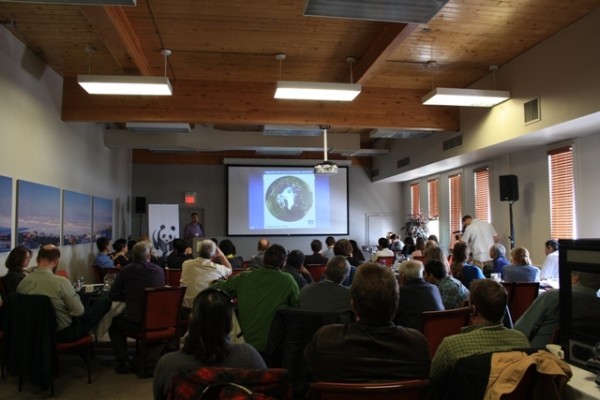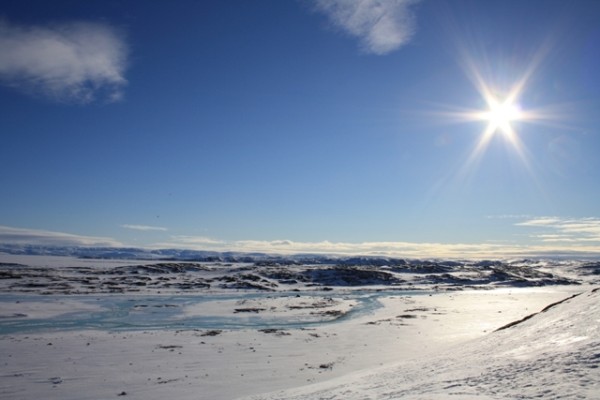Working together for a better Arctic future
If I had to summarize the theme of the first day of the Last Ice Area Workshop, it would be that different groups with different perspectives must work together to achieve the best outcome. We heard something along those lines from the scientists and researchers who presented their studies on Arctic sea ice; the hunters who spoke of their experiences on the land, ice and water; and the government officials who explained development policies. They made a solid case for exactly what WWF is trying to do – bring the various kinds of experts to the table with decision-makers and let them work together to shape the future of the Arctic.
We heard today from WWF’s Last Ice Area project leads, who gave updates on activities that have taken place or are underway in Greenland and Canada, including some further areas for research. Former Iqaluit Mayor Madeleine Redfern then spoke about some of the trends, challenges and opportunities she has noted in Arctic conservation. Her remarks included important observations about the uneven history of bringing science and local traditional knowledge together, and called on everyone present to use the workshop as an important chance to speak freely and openly on this, so that these hurdles may be overcome.
We also enjoyed presentations from some of the leading researchers on Arctic sea ice, including Bruno Tremblay of McGill University. A professor of Atmosphereic and Oceanic Sciences, Bruno shared the results of some important sea ice modeling he created, to show different scenarios for where the sea ice could be in the future, and when. This research fills a significant gap that was identified at the previous Last Ice Area workshop, and was funded by the Arctic Home campaigns. And Professor Warwick Vincent, Scientific Director at the Centre d’Etudes Nordiques and Canada Research Chair at the University of Laval, managed to engage the whole audience in a discussion about the impact of changes in sea ice on the microorganisms and vertebrates that rely on it.
For a different perspective, we heard from Pitsey Moss-Davies of the Inuit Circumpolar Council, who shared the initial results of a literature review on traditional knowledge of the Last Ice Area. We also were lucky to hear some first-hand accounts of experiences with the land and ice, with remarks from Theo Ikummaq of Igloolik and Mads Ole Kristiansen of Qaanaaq. Their incredible stories included details on the changes they have witnessed, and the challenges and opportunities they see as a result of a warming Arctic.
We also heard valuable presentation on a North Waters project off the coast of Greenland, the policies and approaches to Arctic oil and gas and mining developments taken by the Canadian and Greenlandic governments, and an overview on Arctic shipping.
It was a full day of presentations and discussions, but everyone left feeling very positive about the discussion – a great way to start day two of the workshop. Those feelings were enhanced – for me, at least – by our evening activity: a country food dinner out at the Sylvia Grinnell Territorial Park Pavillion. It was a beautiful, sunny evening (the sun doesn’t really go down here at this time of year, though there is a bit of a late night twilight period), and the scenery was spectacular. It was a terrific reminder of what we’re all working for: a remarkable land, home to unique communities and wildlife, all of which deserve everyone’s best efforts to ensure they have a long and healthy future.



